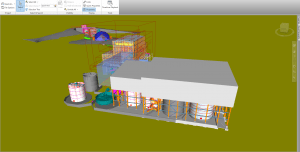For our equilibrium project, we decided to explore the second condition of equlilibrium which states that the net torque acting on an object must be zero. We did this by creating a system in which the net torque was zero as the system was perfectly balanced.

Originally, we only had the bottom layer, however, we decided to add an additional layer to add to the complexity of the system. If you look closely at the bottom layer, it isn’t in equilibrium as the weights are not in the proper places whereas the top layer is in equilibrium as the masses are at the appropriate distances. This was do to balance the bottom layer and create the illusion that they are two independant bodies somehow stacked on top of eachother when in reality, it’s simply one layer balancing the other.
Below is our calculations as well as our sources of error for the system that we made:

Reflection:
Complexity: I feel that our project was fairly complex as it was one system that was composed of 2 seperate systems. We had two pivot points where we used highlighters which contributed to that complexity as it it was harder to balance these masses on such a small surface area. 5/5
Creativity: I beleive that our project was fairly creative. We wanted to make a project that took the theme of school supplies and thus we opted for using rulers and highlighters. We could have used more stable objects such as wooden blocks for our fulcrums, however, we wanted to show how creative we could be while still conserdering a challenging design. 4/5
Calculations: Our calculations were very clearly organized and labeled. 5/5
What did I learn from this experience?
From this experience, I am starting to feel more comfortable with the concept of equilibrium. It allowed me to experiment with the concept and understand how exactly it would work in a real life situation. I noticed how small difference like the position of the mass on the ruler and the position of the fulcrum could drastically affect the project. Overall, I feel that this was a very good way of demonstrating equilibrium.
What do I think went well
I think we worked well together as a team. We were able to figure out exactly what we wanted to do and efficiently put it together. We all had a very good understanding on how equilibrium worked which aided us in making this project. We contributed equally towards the construction of the project and the calculations. I am also happy that we made a project that really demonstrates the second law of equilibrium as it is often the more complex out of the 2 laws and having a visual understanding helps a lot.
What would I have done differently, given the chance?
If I could redo this project, I would see if I could possibly stack another layer on top; making 3 total layers. I feel that this would make our project even more complicated and interesting. This would add much more volume to our calculations and more forces that we would have to take into account. However, I feel that we did a very good job with this project and I am happy with how it turned out.
